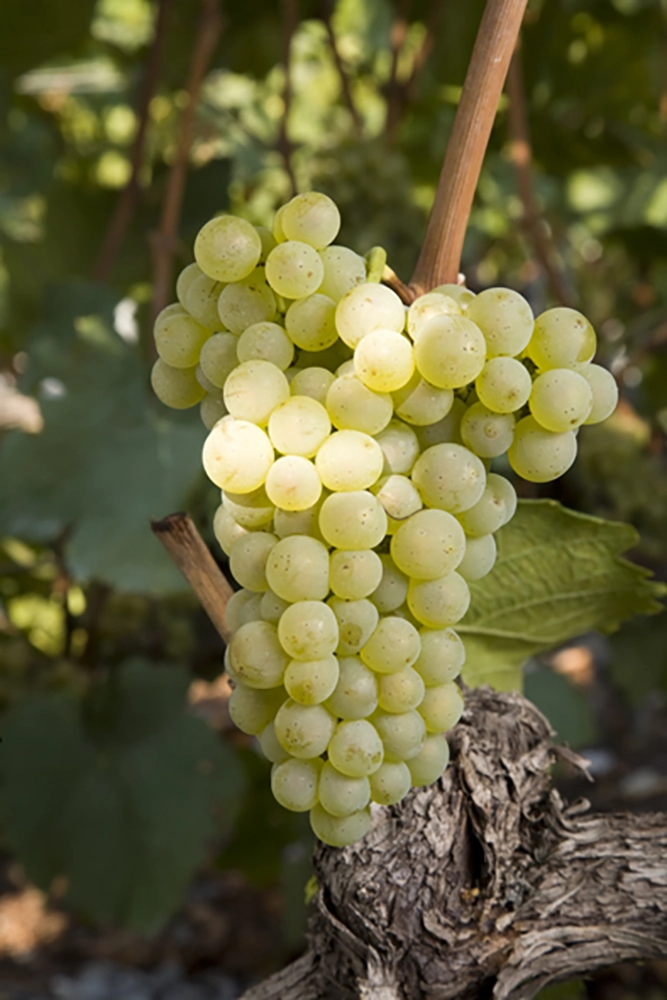Petite Arvine, divine idyll with salty taste

Petite Arvine was for a long while a wine in the background before it became an ambassador for Valais. Its very old age and the fact that it is a native grape are beyond doubt: this is a grape variety that has been grown in Valais for at least four centuries.
Old documents lead us to believe that the cultivation of Arvine remained modest compared to plantings of Muscat, Humagne and Rouge (a Valais grape name). It was still considered minor during the first half of the 20th century but it then caught the interest of wine producers and tasters. The land given over to Petite Arvine nearly quadrupled between 1991 and 2008. These new plantings benefit from improved clone selections – the plant demands a great deal of attention. Some specialists like to compare Petite Arvine to “a very demanding lord”. Only the best slopes work well with this variety that ripens late. The grape is not happy with soil that is too fertile or marked by too much dryness. Tasters appreciate it for its typicity and its ability to age well. They readily mention its nose of grapefruit, aromas of rhubarb and pineapple and, in mouth, passion fruit, kiwi and quince. Media reports in Switzerland and abroad praise the merits of this powerful white wine. Some producers with international reputations have begun to grow Arvine elsewhere in Europe.
To avoid an abusive use of this new queen grape, the Canton of Valais and the cantonal agricultural office are fighting to have a traditional denomination which would protect it, as is the case for Fendant, Dôle and Goron.
Sourced from
– CARRUZZO Sabine, MEILLAND Arnaud, PAYO Christine et AMMANN-DOUBLIEZ Chantal, « Petite Arvine: l’histoire d’une suivante devenue reine »
– VOUILLAMOZ José, « Premières mentions de l’Arvine et de l’Amigne au XVIIe siècle »
in Histoire de la Vigne et du Vin en Valais : des origines à nos jours, Sierre-Salgesch, Musée valaisan de la Vigne et du Vin, Gollion, Infolio, 2009.
© copyright Musée du Vin - Webdesign | bebold


